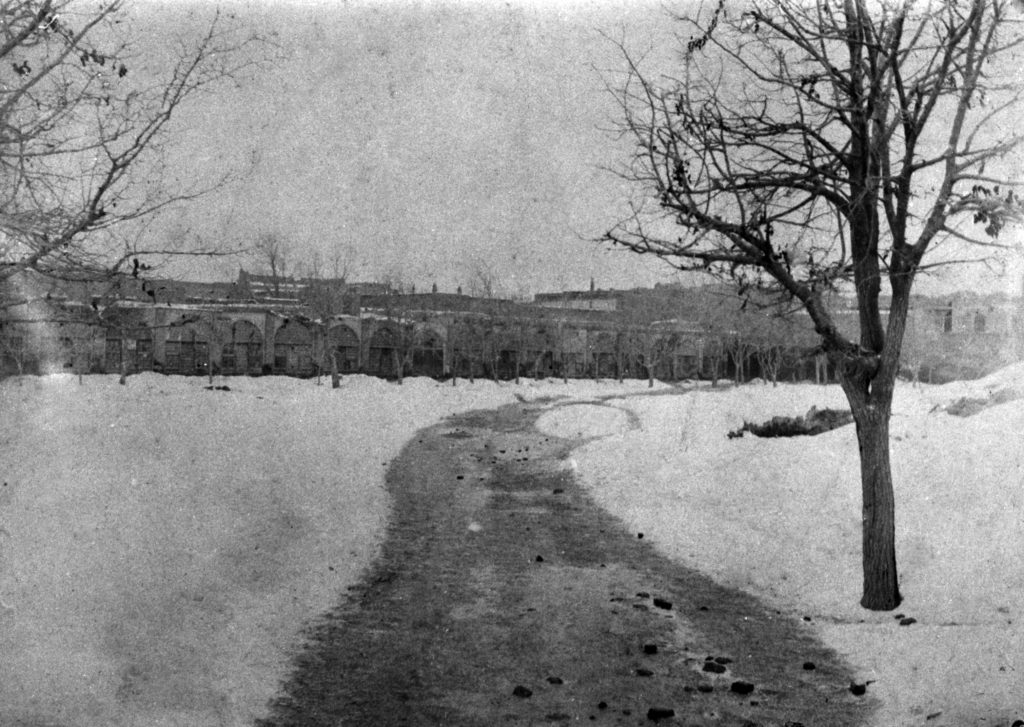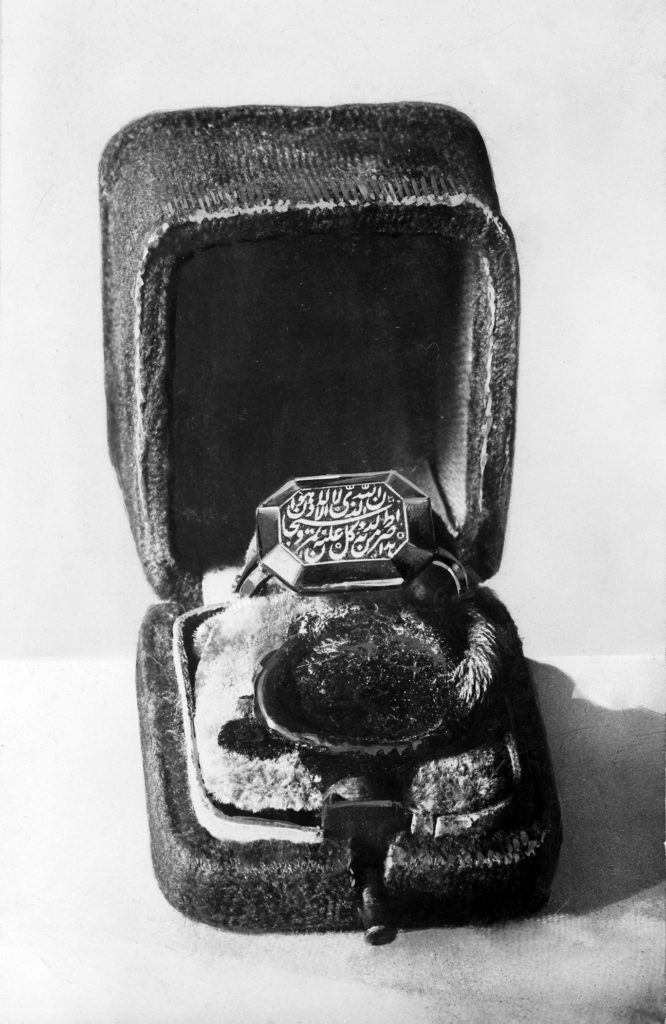The closing days of the Báb’s Revelation
Continuing our series of stories from the Dawn-Breakers leading up to the bicentenary of the Birth of the Báb, here we share an excerpt that describes the events before His martyrdom.
Although the Grand Vazír of Nasiri’d-Dín Sháh hid his intent to have the Báb executed, in part due to the Báb’s many influential admirers, a footnote from the Dawn-Breakers explains, “[The Báb] knew it himself before the event, and was not displeased at the presentiment. He had already ‘set his house in order,’ as regards the spiritual affairs of the Bábí community.”[1]
Before being taken to Tabríz, the Báb bequeathed some of His earthly possessions to Bahá’u’lláh, among them an item that expressed his deep love and respect for “Him Whom God Shall Make Manifest,” as the sun set on His own Dispensation, and that of Bahá’u’lláh was soon to rise.
Distance view of the Barracks Square in Tabríz where the Báb was martyred. Photo: Bahá’í Media Bank.
“Though the forces of the imperial army had everywhere triumphed, though the companions of Mullá Husayn and Vahíd had successively been mowed down in a ruthless carnage at the hands of its officers, yet to the shrewd minds of the rulers of Tihran it was clear and evident that the spirit responsible for such rare heroism was by no means vanquished, that its might was far from broken. The loyalty which the remnants of that scattered band bore to their captive Leader still remained unimpaired. Nothing had as yet been successful, despite the appalling losses they had sustained, in sapping that loyalty or in undermining that faith. Far from being extinguished, that spirit had blazed more intense and devastating than ever…
Above all, He who had kindled that flame and nourished that spirit was still alive, and, despite His isolation, was able to exercise the full measure of His influence. Even a sleepless vigilance had been powerless to stem the tide that had swept over the entire face of the land, and which had as its motive force the continued existence of the Báb. Extinguish that light, choke the stream at its very source, and the torrent that had brought so much devastation in its wake would run dry. Such was the thought that swayed the Grand Vazír of Nasiri’d-Dín Sháh. To do Him to death seemed to that foolish minister the most efficacious means for the recovery of his country from the shame into which he thought it had sunk.
Bestirred to action, he summoned his counsellors, shared with them his fears and his hopes, and acquainted them with the nature of his plans. ‘Behold,’ he exclaimed, ‘the storm which the Faith of the Siyyid-i-Báb has provoked in the hearts of my fellow-countrymen! Nothing short of his public execution can, to my mind, enable this distracted country to recover its tranquillity and peace…’
Disregarding the advice of his counsellor, the Amír-Nizám (Grand Vazír) despatched his orders to Navváb Hamzih Mírzá, the governor of Ádhirbayján, who was distinguished among the princes of royal blood for his kind-heartedness and rectitude of conduct, to summon the Báb to Tabríz. He was careful not to divulge to the prince his real purpose. The Navváb, assuming that the intention of the minister was to enable his Captive to return to His home, immediately directed one of his trusted officers, together with a mounted escort, to proceed to Chihríq, where the Báb still lay confined, and to bring Him back to Tabríz. He recommended Him to their care, urging them to exercise towards Him the utmost consideration.
Faithful to the instructions he had received from Navváb Hamzih Mírzá, that officer conducted the Báb to Tabríz and showed Him the utmost respect and consideration. The prince had instructed one of his friends to accommodate Him in his home and to treat Him with extreme deference. Three days after the Báb’s arrival, a fresh order was received from the Grand Vazír, commanding the prince to carry out the execution of his Prisoner on the very day the farmán would reach him…
Forty days before the arrival of that officer at Chihríq, the Báb collected all the documents and Tablets in His possession and, placing them, with His pen-case, His seals, and agate rings, in a coffer, entrusted them to the care of Mullá Báqir, one of the Letters of the Living. To him He also delivered a letter addressed to Mírzá Ahmad, His amanuensis, in which He enclosed the key to that coffer. He urged him to take the utmost care of that trust, emphasised the sacredness of its character, and bade him conceal its contents from anyone except Mírzá Ahmad….
Mullá Báqir delivered the trust into the hands of Mírzá Ahmad, who, at the insistence of Shaykh Azim, opened it before us. We marvelled when we beheld, among the things which that coffer contained, a scroll of blue paper, of the most delicate texture, on which the Báb, in His own exquisite handwriting, which was a fine shikastih script, had penned, in the form of a pentacle, what numbered about five hundred verses, all consisting of derivatives from the word “Bahá.” That scroll was in a state of perfect preservation, was spotlessly clean, and gave the impression, at first sight, of being a printed rather than a written page. So fine and intricate was the penmanship that, viewed at a distance, the writing appeared as a single wash of ink on the paper. We were overcome with admiration as we gazed upon a masterpiece which no calligraphist, we believed, could rival. That scroll was replaced in the coffer and handed back to Mírzá Ahmad, who, on the very day he received it, proceeded to Tihran. Ere he departed, he informed us that all he could divulge of that letter was the injunction that the trust was to be delivered into the hands of Jináb-i-Bahá”[2]
– Nabíl-i-A`zam, The Dawn-Breakers: Nabíl’s Narrative of the Early Days of the Bahá’í Revelation, pp. 516-19.
[1] Dr. T. K. Cheyne’s “The Reconciliation of Races and Religions,” pp. 65–6.
[2] The title by which Bahá’u’lláh was designated in those days.









